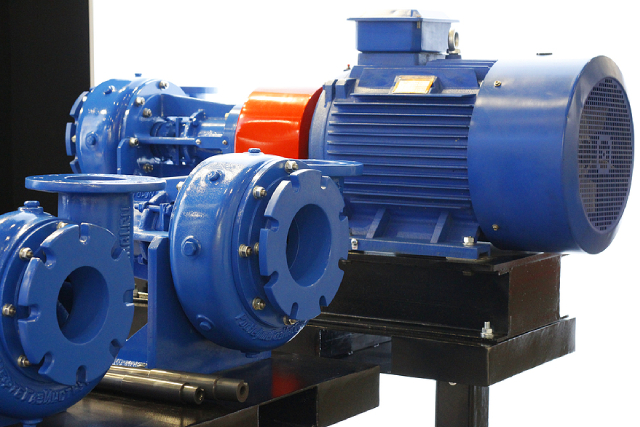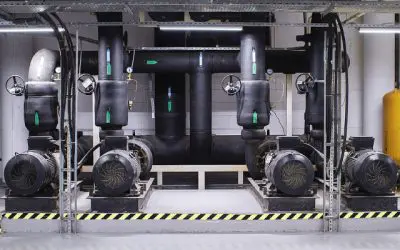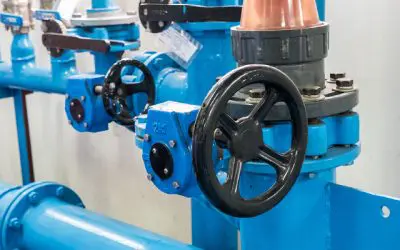
Pumps are indispensable pieces of equipment used across many industries, ranging from water treatment and oil and gas to food processing and pharmaceutical manufacturing. Their role is often so critical that even short periods of downtime can result in lost production, costly maintenance interventions and operational inefficiencies. Yet, despite their importance, pumps remain one of the most frequent sources of equipment failure in industrial plants. The causes of these failures are varied, spanning mechanical defects, poor lubrication, misalignment, cavitation, seal degradation, and process-related issues such as suction blockages or operation outside of the best efficiency point.
For many years, vibration analysis has been the default method for assessing pump condition. By focusing on mechanical behaviours such as imbalance, bearing wear and shaft misalignment, vibration monitoring has proven its worth as an effective diagnostic tool. However, as valuable as vibration data is, relying on it alone often leaves operators with only part of the story. In reality, many pump failures are process-driven, where vibration is merely a secondary symptom. Moreover, in plants where operating conditions vary, such as systems equipped with variable frequency drives (VFDs), baseline vibration signatures can shift unpredictably, complicating fault diagnosis.
This is where multiparameter pump monitoring enters the picture. By combining vibration data with additional parameters such as temperature, magnetic flux, pressure and flow, operators gain a more holistic view of pump health. Instead of piecing together isolated signals, multiparameter monitoring provides context, helping maintenance teams distinguish between normal operational changes and genuine fault conditions. The result is a smarter, more proactive approach to pump reliability management.
Why a Broader Perspective of Pump Health is Important
Vibration analysis remains an essential element of pump monitoring, but it is far from sufficient on its own. Multiparameter monitoring bridges these gaps by integrating diverse measurements to create a comprehensive diagnostic framework.
One of its greatest advantages is the ability to track the operating state of pumps in real time. For example, vibration data from a screw pump or screw compressor running on a VFD will vary significantly as speed increases or decreases. Without access to running speed or load data, identifying fault frequencies and diagnosing the root cause of anomalies becomes guesswork. Magnetic flux sensing provides this missing piece, giving precise insights into speed, load variation and start/stop events.
Equally important is the detection of process-related issues. Problems such as dry running, suction blockage or abnormal seal temperatures often present no obvious vibration signatures in their early stages. By monitoring temperature and pressure alongside vibration, operators can catch these faults before they escalate into catastrophic failures. This not only minimises downtime but also extends the life of expensive pump components.
Finally, multiparameter monitoring enables comprehensive root cause analysis. By correlating vibration patterns with temperature, magnetic flux or pressure changes, maintenance teams can determine whether issues stem from mechanical wear, lubrication problems, hydraulic conditions or process instabilities. This deeper insight translates into better decision-making around lubrication schedules, load balancing, spare part stocking and service intervals.
In short, multiparameter monitoring moves pump reliability from a reactive or purely predictive practice into a proactive, data-driven discipline.
Key Parameters in Multiparameter Monitoring
To understand the full diagnostic potential of multiparameter systems, it is useful to examine the main parameters typically measured and their associated failure modes:
- Vibration acceleration – Detects cavitation, lubrication issues and early bearing faults.
- Vibration velocity – Highlights vane pass vibration, shaft imbalance and misalignment.
- Vibration demodulation – Effective for identifying bearing defects.
- Bearing housing temperature – Reveals lubrication deficiencies or late-stage bearing damage.
- Seal flush line temperature – Indicates seal wear or insufficient cooling.
- Seal delta pressure (ΔP) – Suggests flow blockages or inadequate seal circulation.
- Magnetic flux – Detects motor defects, increases load friction and provides speed/load data.
- Suction and discharge pressure – Identifies flow obstruction and overall operating state.
By combining these signals, maintenance personnel are equipped not only to detect developing faults but also to determine their severity and underlying cause with greater certainty.
Real-World Examples of Multiparameter Monitoring
Example 1: Preventing False Alarms
Consider a facility maintaining a vertical pump. A sudden spike in vibration levels was initially flagged as a potential problem. Under traditional vibration-only monitoring, this could have triggered an unnecessary inspection or shutdown. However, multiparameter monitoring, particularly magnetic flux sensing, provided the missing context.
The additional data revealed that the pump had ramped up to full speed in response to increased process demand. The corresponding rise in vibration was therefore consistent with expected behaviour rather than a developing fault. By correlating vibration with load and speed data, the monitoring team avoided needless downtime and directed resources towards genuinely at-risk assets.
Example 2: Detecting Issues Missed by Vibration
In another case, a motor-gearbox-pump assembly at a manufacturing plant showed stable vibration levels over several weeks. However, multiparameter monitoring detected a gradual increase in bearing temperature at the pump’s non-drive end. Since vibration data did not indicate any problem, the anomaly might have been dismissed under a vibration-only programme.
Upon further inspection, the gearbox oil was found to be degraded, and the unit was replaced with a spare. After replacement, both vibration and temperature readings returned to normal. Although the exact root cause was not fully established, the case highlights the critical role of supplementary parameters like temperature. Without it, early warning signs would have been missed, and the equipment could have failed in service.
Conclusion
Multiparameter monitoring represents the next stage in the evolution of pump reliability management. By moving beyond vibration analysis and incorporating temperature, magnetic flux, pressure and other process variables, it provides the critical context needed to understand both mechanical and process-related issues. The approach enables operators to detect faults earlier, avoid false alarms, and make more informed maintenance decisions.
In doing so, multiparameter monitoring not only protects pumps but also safeguards the reliability of entire industrial processes. As industries continue to demand higher efficiency and fewer disruptions, adopting a multiparameter approach will be essential for achieving these goals.



